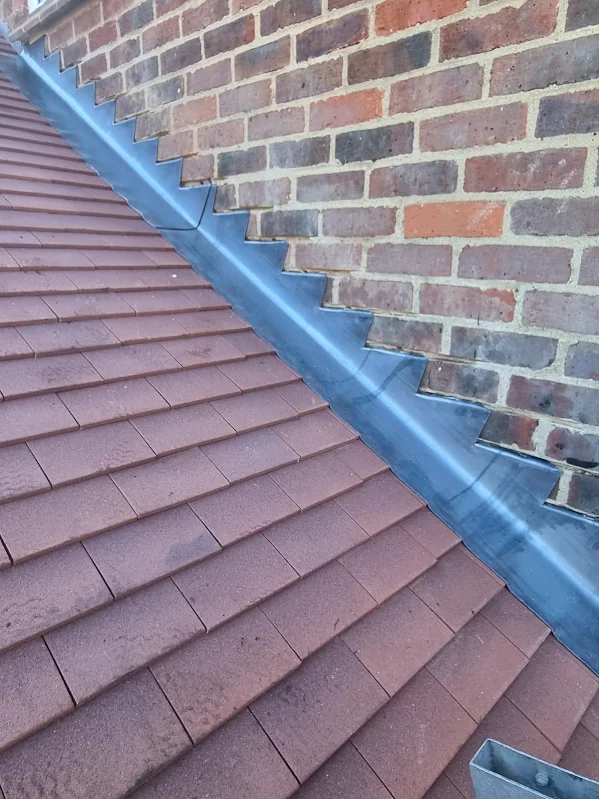+44 7853 968135
How much does labour cost to install soffit and fascia?
Understanding the labour costs associated with soffit and fascia installation represents one of the most significant financial considerations for UK homeowners planning roofline improvements. Professional installation ensures proper weatherproofing and structural integrity, but labour expenses can vary dramatically based on property characteristics, regional pricing, and contractor expertise.
The complexity of soffit and fascia work extends beyond simple board replacement, encompassing structural assessments, precise measurements, and coordinated installation techniques. Labour costs typically account for 60-70% of total project expenses, making it essential to understand pricing structures before commissioning work.
How Much Does It Cost to Have Your Fascia and Soffits Replaced?
Complete fascia and soffit replacement projects in the UK typically range from £100 to £300 per linear metre, with labour representing the largest portion of these costs. Professional tradespeople charge between £150 to £250 per day, depending on regional variations and project complexity.
Material choice significantly influences labour requirements and associated costs. UPVC installations generally require less specialised expertise compared to timber or composite alternatives, potentially reducing labour expenses by 15-20%. However, properties with complex rooflines, multiple angles, or heritage considerations may require additional skilled labour, increasing overall project costs accordingly.
Need some Support with your Fascia and Soffits? Speak with a member of our Professional Fascia and Soffits Team here

How Long Does It Take to Install Soffit and Fascia?
Professional installation timeframes vary considerably based on property size and complexity, with typical semi-detached houses requiring 2-4 days for complete replacement. Experienced contractors can install approximately 20-30 linear metres of soffit and fascia per day under optimal conditions.
Weather conditions and accessibility challenges can extend installation periods significantly. Properties requiring scaffolding setup, working around existing guttering systems, or addressing structural repairs may require additional time, directly impacting labour costs. Planning permission considerations may also influence project timelines, particularly for listed buildings or conservation areas.
How Much Do Soffit and Fascia Cost to Replace?
Total replacement costs encompass both materials and labour, with comprehensive projects ranging from £2,000 to £8,000 for average UK properties. Labour costs constitute approximately £1,200 to £5,600 of these totals, depending on property characteristics and regional pricing variations.
Premium installations featuring composite materials or complex architectural details command higher labour rates due to increased skill requirements. Standard UPVC replacements offer more predictable labour costs, whilst bespoke timber installations may require specialist craftspeople charging premium day rates. Additional considerations include waste disposal fees, scaffolding costs, and potential structural repair work discovered during installation.
| Property Type | Linear Metres | Labour Cost Range | Installation Days |
|---|---|---|---|
| Terraced House | 25-35m | £1,500-£2,800 | 2-3 days |
| Semi-Detached | 35-45m | £2,100-£3,600 | 3-4 days |
| Detached House | 45-60m | £2,700-£4,800 | 4-6 days |
| Bungalow | 40-55m | £2,400-£4,400 | 3-5 days |
How Much Does Labour Cost to Install Soffit and Fascia Per Square Foot?
Labour costs per square foot provide detailed pricing insights for homeowners calculating project budgets with precision. UK contractors typically charge £8 to £15 per square foot for labour alone, with regional variations reflecting local market conditions and contractor availability.
Complex installations involving intricate cutting, custom fitting, or structural modifications may command premium rates of £12 to £20 per square foot. Properties in London and the South East generally experience higher labour costs compared to Northern regions, with differences of 20-30% common across different areas. Understanding these regional variations helps homeowners budget accurately and negotiate fair pricing with local contractors.
| Installation Type | Cost per Square Foot | Skill Level Required | Typical Timeframe |
|---|---|---|---|
| Standard UPVC | £8-£12 | Moderate | 0.3-0.5 sq ft/hour |
| Timber Replacement | £10-£15 | High | 0.2-0.4 sq ft/hour |
| Composite Materials | £12-£18 | High | 0.2-0.3 sq ft/hour |
| Heritage/Listed | £15-£25 | Specialist | 0.1-0.2 sq ft/hour |
For homeowners considering building regulations compliance, the UK Government’s building regulations guidance provides essential information about structural modifications. Additionally, energy efficiency grants may be available for properties incorporating insulation improvements during soffit and fascia replacement projects.
Understanding Labour Costs for Soffit and Fascia Installation
Professional soffit and fascia installation represents a substantial investment in property maintenance and aesthetic improvement, with labour costs forming the foundation of project budgeting. Understanding these expenses enables homeowners to make informed decisions about contractor selection, project timing, and material choices that align with both budget constraints and quality expectations.
The expertise required for proper installation cannot be understated, as incorrect fitting can lead to water damage, structural problems, and costly remedial work. Professional contractors bring specialised knowledge of building regulations, weatherproofing techniques, and structural considerations that justify their labour charges through long-term property protection.
Homeowners should prioritise value over minimum cost when selecting contractors, as skilled installation ensures decades of reliable performance whilst protecting property value and structural integrity.
Need Help with Fascia and Soffit Matters? Talk to one of our Fascia and Soffits Experts today!
How Much Does Labour Cost to Install Soffit and Fascia: Frequently Asked Questions
Property size, architectural complexity, material choice, and regional location represent the primary factors affecting labour costs. Accessibility challenges, structural repairs, and weather conditions can increase labour requirements substantially.
Scheduling work during off-peak periods, bundling multiple roofline improvements, and ensuring clear site access can help reduce labour expenses. Choosing standard UPVC materials over premium alternatives also minimises specialist labour requirements.
Most professional quotes include basic equipment costs, but extensive scaffolding requirements may incur additional charges. Homeowners should clarify whether scaffolding costs are included in labour estimates before commissioning work.
Professional installers should hold relevant construction qualifications, public liability insurance, and demonstrable experience with roofline work. Wikipedia’s comprehensive guide to soffits provides detailed technical information about proper installation requirements.
UPVC installations require moderate skill levels and standard labour rates, whilst timber and composite materials demand specialist expertise commanding premium charges. Heritage properties may require conservation specialists charging significantly higher day rates.
Spring and summer months typically command higher labour rates due to increased demand and optimal working conditions. Winter installations may offer cost savings but face weather-related delays and accessibility challenges.
Professional contractors must carry comprehensive public liability insurance, which is factored into their day rates. Homeowners should verify insurance coverage before commissioning work to avoid potential liability issues.
Properly installed UPVC soffit and fascia systems last 20-30 years with minimal maintenance, whilst quality timber installations can endure 15-25 years with appropriate care. Professional installation ensures maximum longevity and performance.
Replacement work often involves additional complexities including old material removal, structural assessments, and potential repairs, typically increasing labour costs by 15-25% compared to new installations.
Structural repairs, gutter replacement, roof edge modifications, and waste disposal services can significantly increase project labour requirements. Homeowners should discuss potential additional work during initial consultations.
Obtaining multiple detailed quotes, checking local market rates, and verifying contractor credentials help ensure competitive pricing. Professional associations and trading standards organisations provide guidance on fair pricing practices.
Most contractors require deposits of 10-20% with staged payments tied to project milestones. Avoid contractors demanding full payment upfront or unusually low quotes that may indicate substandard work quality.
Properties requiring building regulation compliance, particularly listed buildings or conservation areas, may need specialist contractors familiar with heritage requirements. This expertise typically commands premium labour rates.
Professional installers typically provide 5-10 year workmanship warranties, with longer guarantees often reflecting higher initial labour costs. Quality installation warranties protect homeowners from premature failure and associated remedial expenses.

